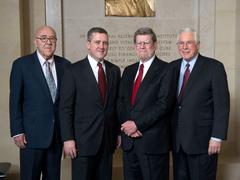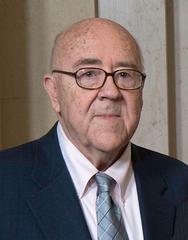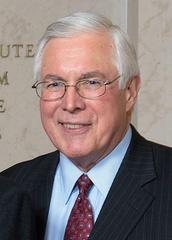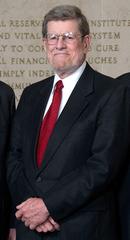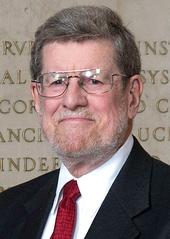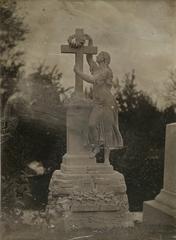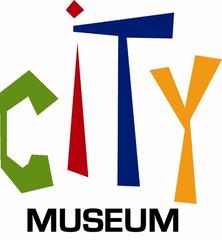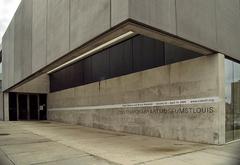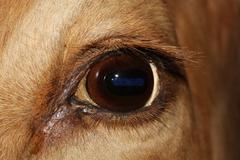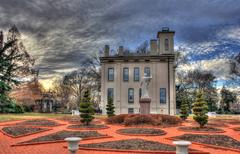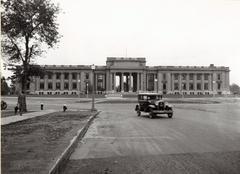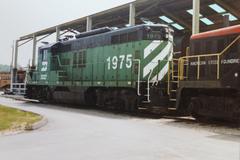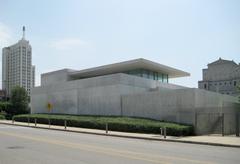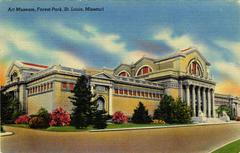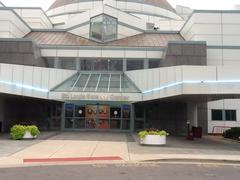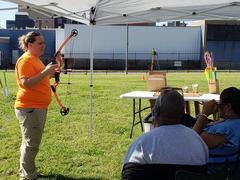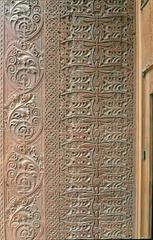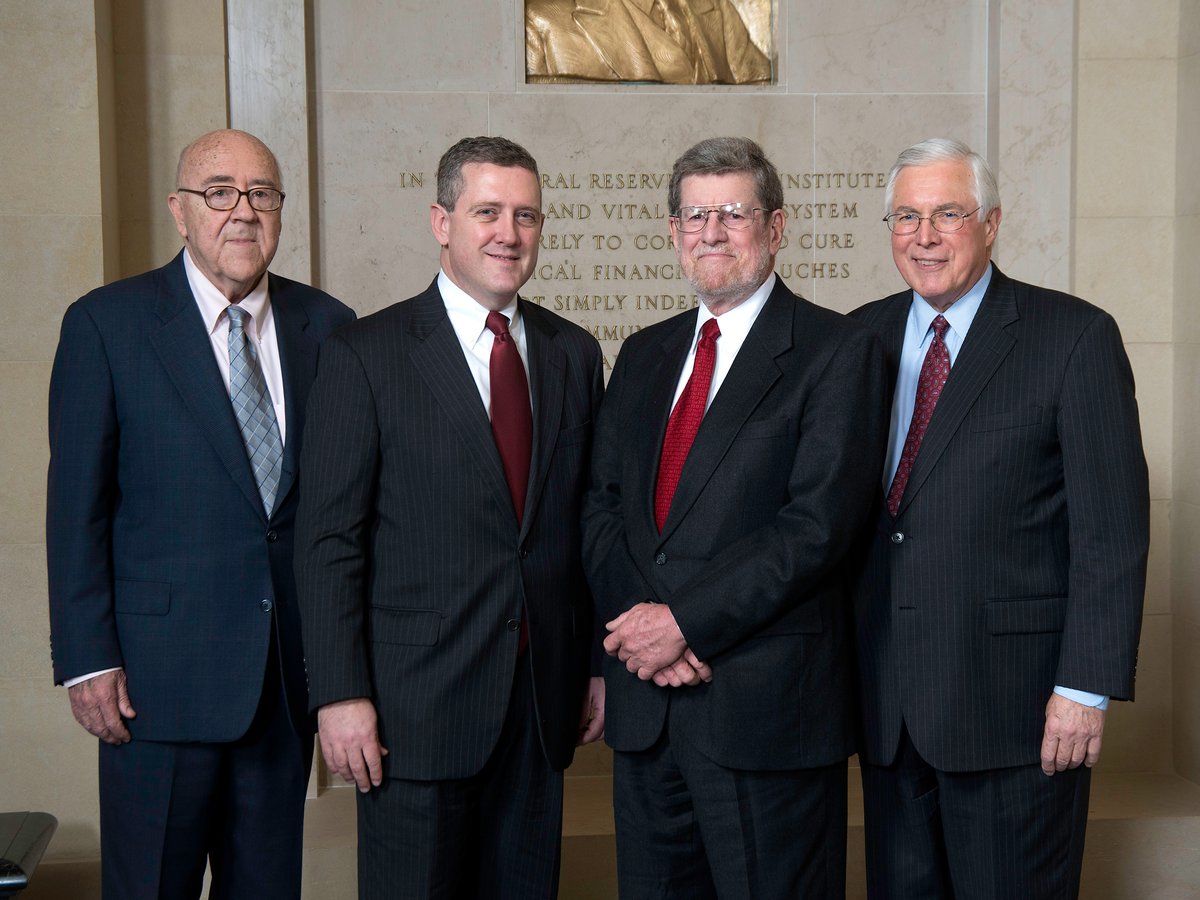
Federal Reserve Bank of St. Louis: Visiting Hours, Tickets, History, and Cultural Significance
Date: 14/06/2025
Introduction
The Federal Reserve Bank of St. Louis is a central fixture in America’s financial landscape and a fascinating destination for visitors interested in economic history, architectural heritage, and the inner workings of the U.S. central banking system. Since its establishment in 1914 as one of twelve regional Reserve Banks, the St. Louis Fed has played a critical role in shaping national monetary policy and supporting economic development across the Eighth Federal Reserve District, which covers Arkansas, as well as portions of Illinois, Indiana, Kentucky, Mississippi, Missouri, and Tennessee (Federal Reserve History).
Located at 411 Locust Street in downtown St. Louis, the Bank’s neoclassical headquarters—designed by Mauran, Russell & Crowell and completed in 1925—stands as a testament to the stability and security that underpin the Federal Reserve System (Wikipedia; Built St. Louis). Visitors can explore the Economy Museum, experience interactive exhibits, and enjoy guided tours that illuminate the Bank’s pivotal role in the U.S. economy.
This guide provides detailed, non-duplicative information for prospective visitors—including history, visiting hours, ticketing, accessibility, travel tips, and nearby attractions—while examining the institution’s enduring cultural and educational significance. For up-to-date details and reservations, consult the official Federal Reserve Bank of St. Louis website.
Table of Contents
- Origins and Early Development
- Architectural and Geographic Significance
- Key Historical Milestones
- Institutional Functions and National Significance
- Visitor Experience: What You Need to Know
- Frequently Asked Questions (FAQs)
- Diversity and Inclusion
- Legacy and Continuing Impact
- Summary and Planning Your Visit
- Sources
Origins and Early Development
The Federal Reserve Bank of St. Louis was established following the Federal Reserve Act of 1913. Its selection as a Reserve Bank city was almost guaranteed, given St. Louis’s status as the nation’s fourth-largest city and a major economic and transportation hub at the time (Federal Reserve History). As one of only three “central reserve cities”—alongside New York and Chicago—St. Louis’s prominence was further underscored by its requirement for banks to hold gold reserves.
After a survey by the Reserve Bank Organization Committee, St. Louis received its charter in May 1914 and opened on November 16, 1914, quickly establishing itself as a leader in financial services for the region (Federal Reserve History).
Architectural and Geographic Significance
The St. Louis Fed’s imposing neoclassical headquarters was designed in 1924 by Mauran, Russell & Crowell (Wikipedia). Its limestone façade and fortress-like design communicate gravitas and security, while interior spaces—such as the lobby and Economy Museum—feature period details, marble finishes, and high ceilings that evoke the grandeur of early 20th-century banking (Built St. Louis).
The Bank serves the Eighth Federal Reserve District, operating branches in Little Rock, Louisville, and Memphis. Located amidst St. Louis’s historic downtown, it is within walking distance of major attractions like the Gateway Arch and Old Courthouse.
Key Historical Milestones
World Wars and Economic Stabilization
During World War I, the Bank played a central role in Liberty Loan drives and helped stabilize the economy through the 1920s. It was actively involved in the national response to the Great Depression and supported financial efforts during World War II (Federal Reserve History).
The “Maverick” Era and Research Leadership
Under the direction of Homer Jones in the 1950s–1970s, the St. Louis Fed became known for its rigorous, data-driven economic research. It pioneered monetarist theories, arguing for the importance of controlling money supply to manage inflation, and produced influential publications such as the “Review” and “Burgundy Books” (Federal Reserve History; Wikipedia).
This commitment to research laid the groundwork for the renowned FRED economic data platform (FRED).
Community Development and Outreach
In the 2000s, the St. Louis Fed expanded its focus on economic education and community development, transforming its branches into regional outreach hubs and supporting initiatives like the Institute for Economic Equity. The Bank’s work has addressed disparities in wealth, promoted financial inclusion, and supported affordable housing and small business growth (Federal Reserve History).
Modern Innovation and Public Engagement
Today, the St. Louis Fed is a national leader in economic education. Its Econ Lowdown platform serves teachers nationwide, while its research division and FRED remain vital resources for policymakers, journalists, and the public. The Bank has also responded to major crises—from the Great Recession to the COVID-19 pandemic—by providing timely research and community support (Federal Reserve History).
Institutional Functions and National Significance
The St. Louis Fed’s core responsibilities include:
- Monetary Policy: Participates in the Federal Open Market Committee (FOMC), helping to set national interest rates and monetary policies (Wikipedia).
- Bank Supervision: Oversees state-member banks and holding companies, ensuring safety and regulatory compliance (Wikipedia).
- Financial Services: Provides cash handling, check clearing, and payment services across the Eighth District (Wikipedia).
- Fiscal Agency: Manages operations for the U.S. Treasury, including debt management and payment processing (Wikipedia).
- Economic Research: Publishes research on local and national economics, with an emphasis on transparency and accessibility (Federal Reserve History).
The Bank also acts as a “lender of last resort,” providing liquidity to financial institutions in times of need.
Visitor Experience: What You Need to Know
Visiting Hours and Tickets
- Hours: Monday through Friday, 9:00 AM to 4:00 PM. Closed on federal holidays (FRB Services; Federal Reserve Bank of St. Louis).
- Admission: Free; no ticket required for museum entry.
- Tours: Guided tours are available by advance reservation. These tours offer deeper insights into the Bank’s history, architecture, and operations.
Accessibility
The facility is fully accessible for visitors with disabilities, offering wheelchair access and accommodations upon request. Contact visitor services ahead of your visit for assistance (FRB Services).
Security and Visitor Policies
All adult visitors must present valid government-issued photo identification. Expect security screening similar to airport procedures. Review the list of prohibited items and allow extra time for entry (FRB Services).
Museum and Exhibits
The Economy Museum features interactive exhibits on the history of money, the Federal Reserve’s role, and economic concepts. Visitors can explore hands-on displays, multimedia presentations, and view historical artifacts (Federal Reserve Bank of St. Louis).
Photography
Photography is permitted in most public and museum areas; restrictions apply in certain locations—check with staff for guidance.
Travel Tips and Nearby Attractions
- Location: 411 Locust Street, downtown St. Louis.
- Transportation: Easily accessible via MetroLink light rail and multiple bus routes.
- Parking: Public garages and metered street parking are available nearby.
- Nearby Sites: Gateway Arch, Old Courthouse, Citygarden, Missouri History Museum, and numerous restaurants are within walking distance.
Frequently Asked Questions (FAQs)
Q: Is there an admission fee?
A: No, admission and tours are free, but tours require advance reservation.
Q: What are the visiting hours?
A: Monday to Friday, 9:00 AM to 4:00 PM; closed on federal holidays.
Q: Can children visit?
A: Yes, tours and exhibits are suitable for families and students.
Q: Is the site accessible?
A: Yes, the facility is fully accessible and offers accommodations upon request.
Q: Is photography allowed?
A: Yes, in most public and museum areas; check with staff for restrictions.
Q: How do I reserve a tour?
A: Reserve tours online via the official visitor page.
Diversity and Inclusion
The St. Louis Fed is committed to fostering diversity and inclusion. Its Office of Minority and Women Inclusion (OMWI), established in 2011, works to promote diversity in procurement, workforce, and financial literacy outreach, especially in underserved communities (Wikipedia).
Legacy and Continuing Impact
With a legacy spanning over a century, the Federal Reserve Bank of St. Louis continues to shape national monetary policy, foster economic research, and support public education. Its pioneering work in data transparency and economic outreach, as well as its modern educational initiatives, ensure ongoing relevance and public engagement (Federal Reserve History).
Summary and Planning Your Visit
A visit to the Federal Reserve Bank of St. Louis offers an enriching experience—combining history, architecture, economic education, and interactive exhibits at the Economy Museum. With its central downtown location, accessibility, and free admission, the Bank is an ideal destination for students, educators, families, and anyone interested in America’s economic system.
Plan ahead:
- Reserve tours in advance
- Bring valid ID
- Review security procedures
- Explore nearby attractions
- Stay updated via the official website and social media
For educators and students, platforms like Econ Lowdown provide valuable resources before and after your visit.
Sources
- Federal Reserve History: St. Louis Fed
- Federal Reserve Bank of St. Louis - Wikipedia
- Built St. Louis: Federal Reserve Bank
- FRB Services - Federal Reserve Bank Offices
- Federal Reserve Bank of St. Louis - Visitor Information
- Federal Reserve Bank of St. Louis Financial Statements, 2023
- FRED Economic Data
- Econ Lowdown Economic Education
